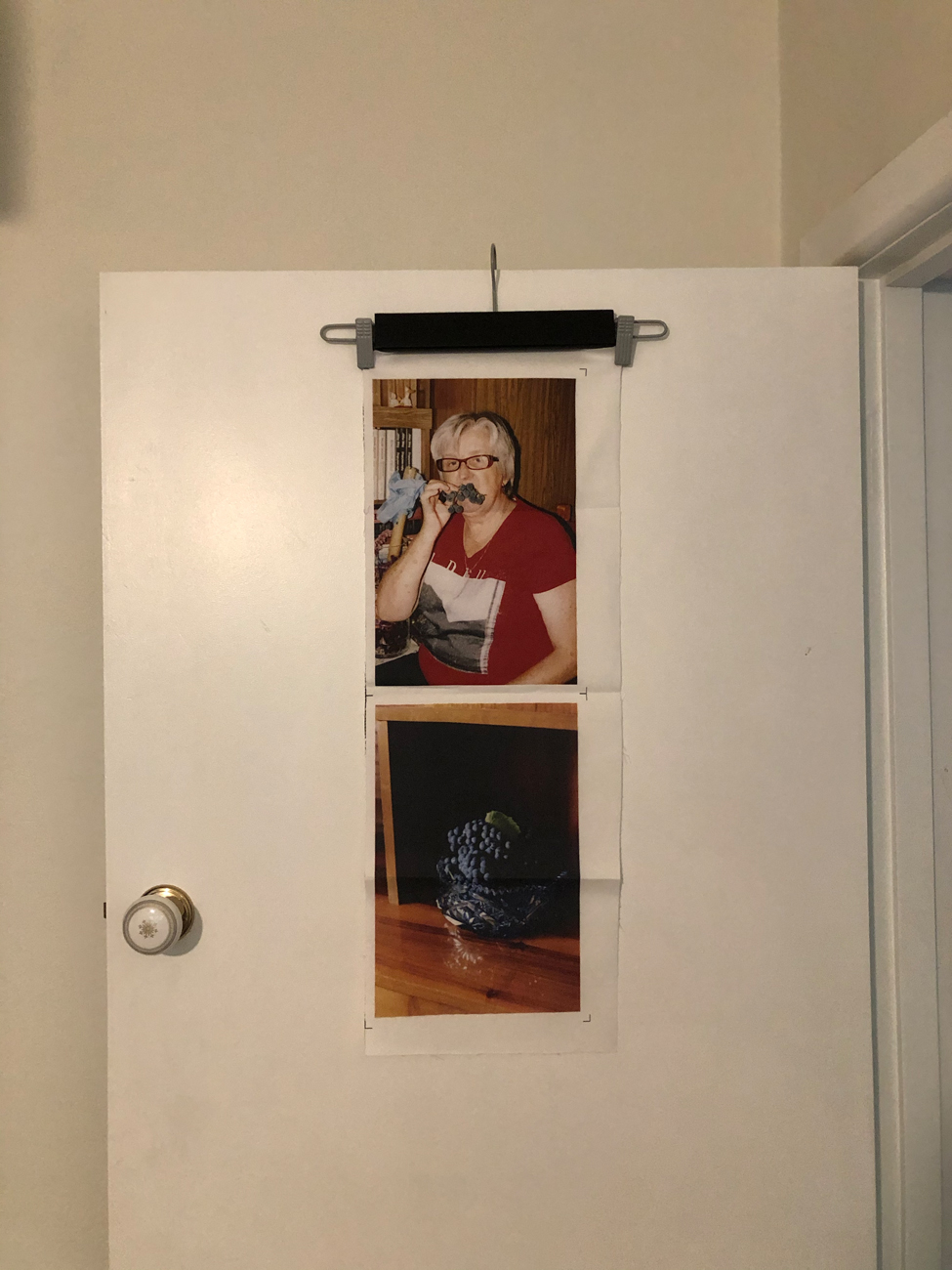Vanessa Duque
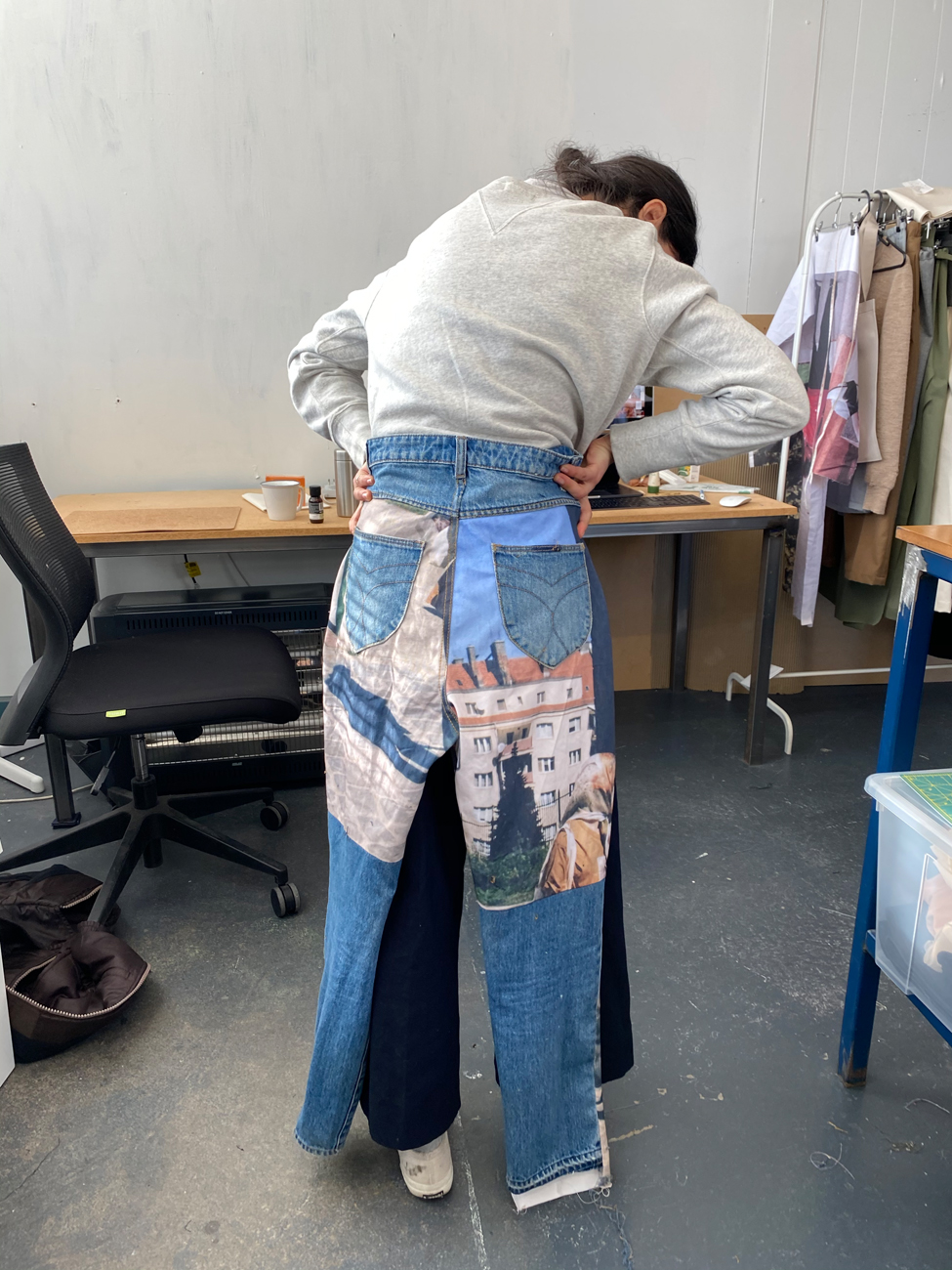
VANESSA DUQUE INTERVIEW
by Shannon Green:
Vanessa Duque is a fashion designer and researcher based in Melbourne. She holds a Master of Fashion (Design) at RMIT University. She is currently teaching in the Bachelor of Fashion Design, School of Fashion and Textiles at RMIT. Alongside her teaching and experimental studio, she commissions and collaborates with local brands and designers.
Vanessa completed the Bachelor of Fashion Design at Colegiatura Colombiana in South America and subsequently worked in the fashion industry for five years, including Denim design and production. Her practice-led research reflects on and responds to how the conception and definition of garments are affected through industrialisation and consumption. Vanessa’s work expands the collective imaginary of denim in contemporary culture and experiments with ways of developing objects/garments by creating links between traditional use and its possible aesthetic deviations.
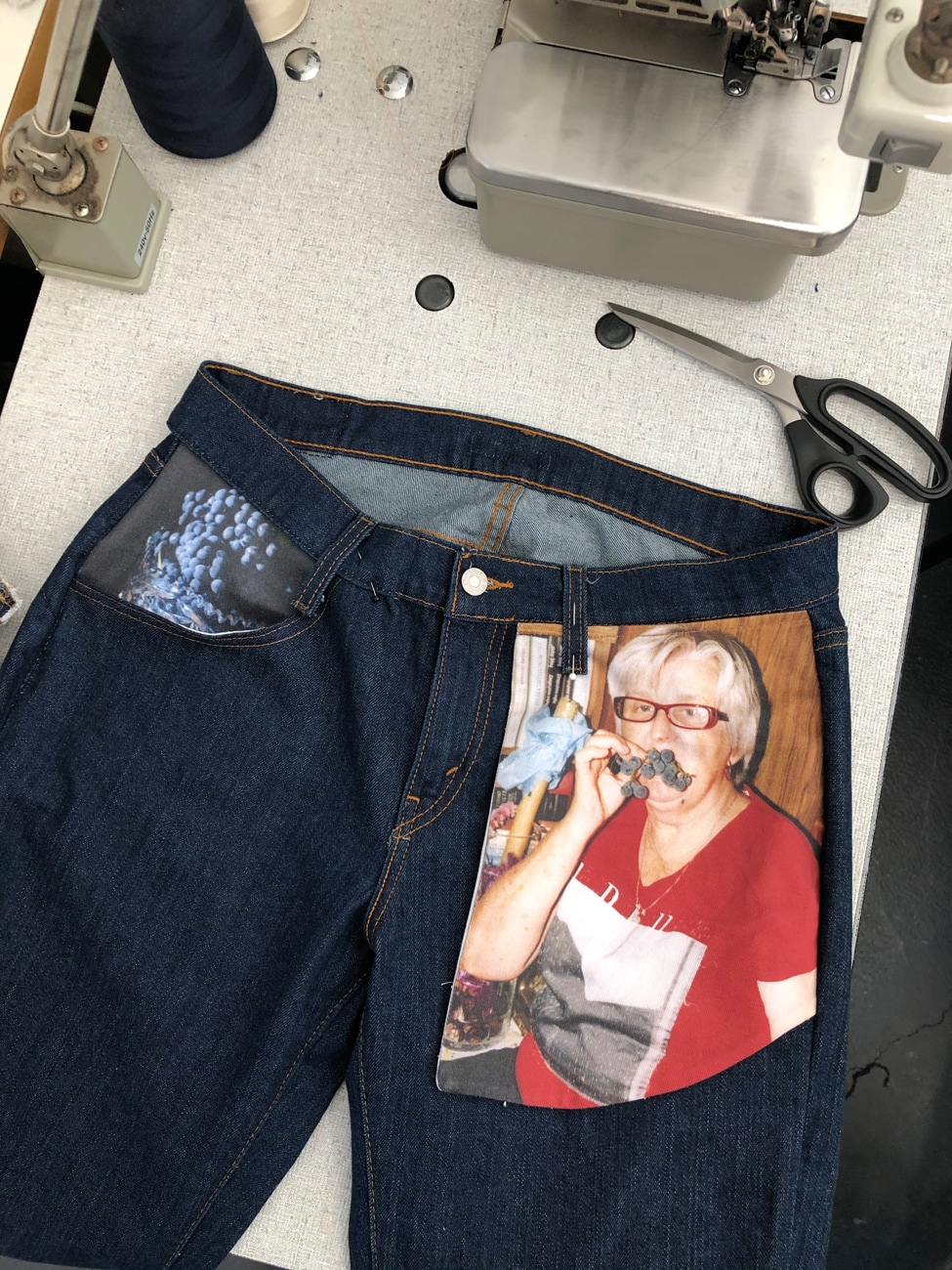
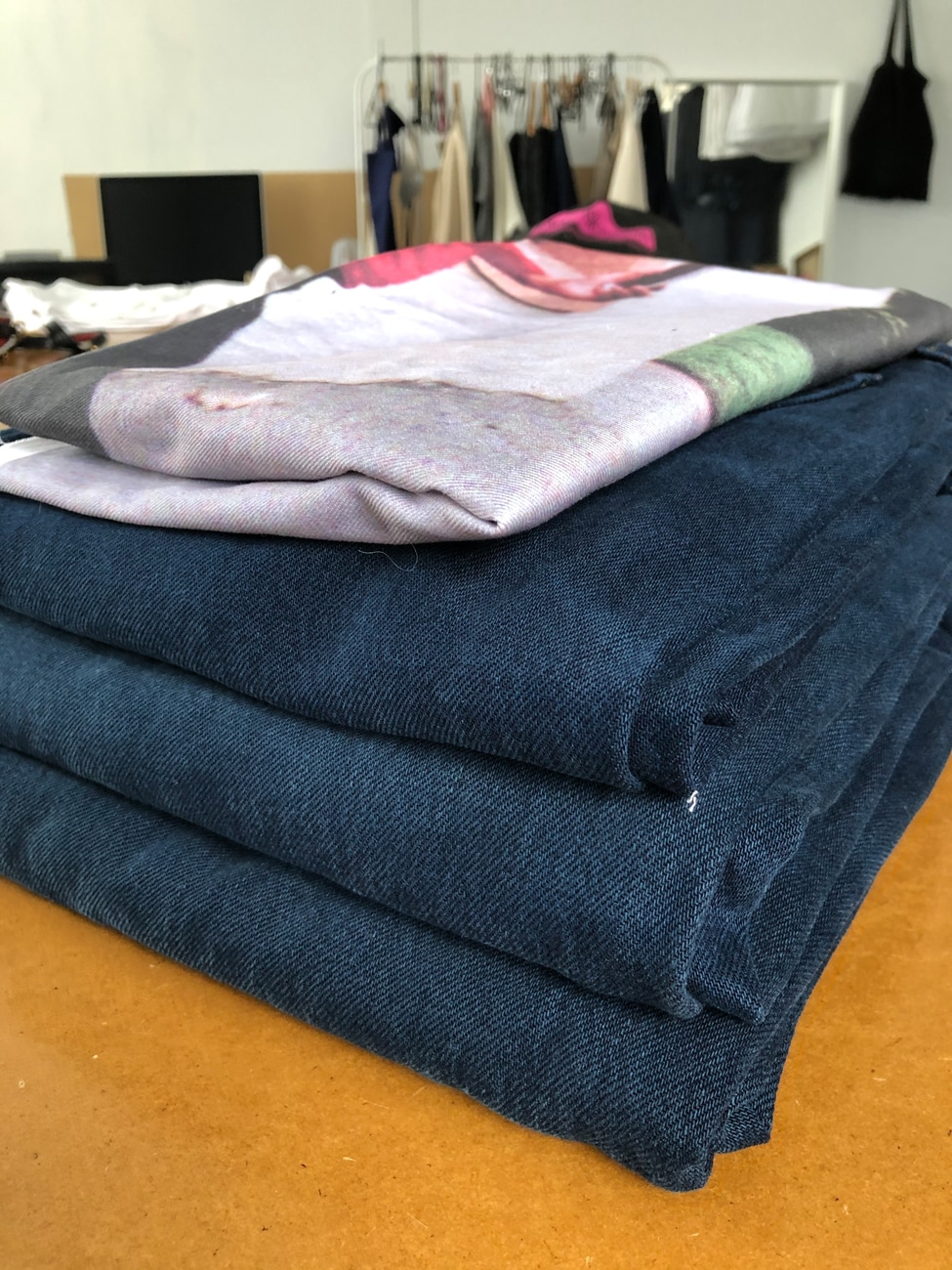
SGI would like to begin by asking how would you describe your own
practice? And how has your own personal background in design informed
the work produced in collaboration with Matt Finish?
vdMy practice responds to how the conception and definition of garments and objects are affected
through industrialisation and consumption. I am interested in investigating how they could also be
understood by abstracting knowledge self-contained.
Every project aims to find contemporary modes of use, wear, and behaviours that challenge the
traditional definitions of “denim”, all of its different phases and expressions, from material
techniques and processes to industrialisation and commercial applications. I find I am constantly
responding to how the definition of garments intentionally leaves room for interpretation.
I first worked as a denim designer in South America, Colombia, and I became incredibly interested
in how the materiality of denim has an intertwined impact on our everyday, craft, artisans, makers,
and environment. Much of what I do is influenced by my background and Masters studies in
Melbourne. And it also informs my studio practise, my approach to design, and embedded in
making.
Usually, I start a project by deconstructing and unpicking observations. The process becomes an
ongoing dialogue with its elements, functionalities, signs of wear, and many more ideas. For
Mattfinish, I started backwards, from the materiality of the pre-loved garments, disassembling and
creating spaces for the image to live. And considering multiple readings by wearing the garment,
viewing it from different angles and its relationship with the image application.
sgMatt Finish has an ethos of sustainability, with the intention to give new
life to existing garments. With this renewable consideration were you
having any particular conversations around this project with yourself and
the people around you?
vdI really enjoyed working in this area of regenerative design as one of the many ways to contribute to
the circular design discourse. I’m continually amazed by the many reinterpretations and the unique
approaches to upcycling, extending the life of garments creating new value, and bring awareness on
how design, production, and our relationship with garments are co-related.
In my opinion this way of working brings many exciting and diverse points of view and
conversations. We create a conversational space in the studio; we discuss an alternative fashion
system from our sewing machines and cutting table. Everyone who joined the studio collectively
was also part of the dialogue, interrogating and expanding on critical ideas from our different
disciplines and backgrounds. A few of them around what is value in the current fashion landscape;
how to keep the balance between restoring, limiting the waste and the incorporation of new
materials; the quality of garments as the ‘handwriting’ of the designer who made it; and the
discussion around replication and limited edition.
sgWhilst Matt Finish centres around upcycling existing found clothing, it also
in a sense upcycles existing imagery, recontextualising the traditional
surface of images. How did you select which images to work with? Or did
this not affect the overall product? Was there anything particular that you
looked for in the images when selecting which ones to work with?
vdA couple of narratives from the images really resonated with me; my favourites were the moments
that captured an intimate relationship with our living, spaces, and people. And beautiful and subtle
everyday moments. For instance, ‘Agnieszka’s sister walking the dog’ inspired a series of two jeans
with the same image, one ‘pair of jeans’ without treatment and the second with some coffee overdye
and light distress. I hope that because jeans are an ordinary garment that captures the wearer
character, the original images could be constantly personalised, edited and repaired, building a
beautiful image with wearing. In other garments, I was reusing other collaborators scraps, working
with parts of their selected images.
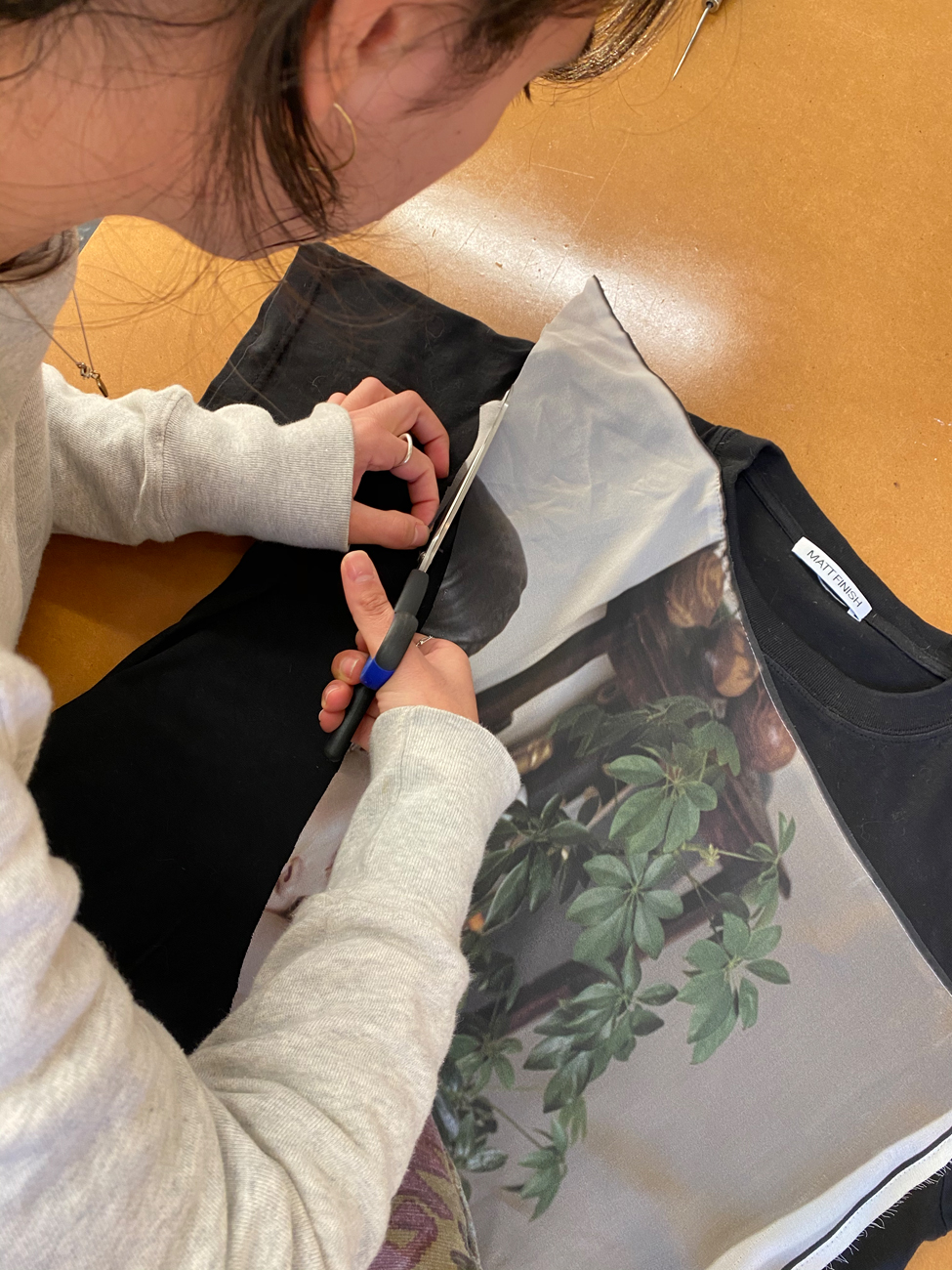

sgDid the images have any impact on the designing process?
vdThey definitely did; I separated the images and reassembled them, taking into consideration their:
composition, their fragmentation qualities, how they interacted with each part when they were next
to each other, and the space between them.
sgAside from the image incorporation, what was the design process like to
recreate upcycled garments?
vdFor me, the design process was different from my usual making process. In some cases it was about
keeping some humour, a detail I found funny about the original garment. For instance, some jeans
have particular rise and leg opening measurements that take me back to silhouettes and construction
details from a few years ago. ‘The tote jean’ has a slightly different leg opening on each side by
keeping the original measurement of the straight and tapered leg of the original garments I was
collaging; or playing with the initial size of the garments and with minor tweaks allowing them to
transform through silhouettes. On the other hand, it was about working with scraps which was more
like an assembly work.
sgMatt Finish being a sustainability-conscious project, did you come across
any waste and if so how did you manage it?
vdWe tried to have minimum waste; the small pieces were used as label tags and patches or
reassembled into other garments.
sgThis project began post-isolation and for the thick of it was produced
during COVID19, how did this impact the design process? Did the current
climate of COVID19 affect your mindset when creating?
vdCOVID 19 change of pace and working from home allowed me to spend more time with the work,
reevaluating materials, reflect on their qualities and my personal connection to them. The unpicking
and the disassembling process became more contemplative, and I learned closely from what I was
doing.
sgIs there something exciting about creating limited edition garments?
vdThere are many exciting parts of creating limited edition pieces; it allows the ideas to be fully
explored and makes them real without replication and reproduction constraints. Celebrates that
nothing is the same. And what a limited edition entails could lead to different ways to create value
or experience these pieces.
sgWhat was the most enjoyable part of the design process with MattFinish?
vdWorking collectively; the conversations when unpicking and making together. Also, there is a
documentation aspect, recording the usually unseen moments by makers and through the lens of
Agnieszka. It is fantastic to see the multiple reinterpretations and significance of the images and
garment typologies through the contributors’ work, looking for unique connections between objects,
images, and ideas.
